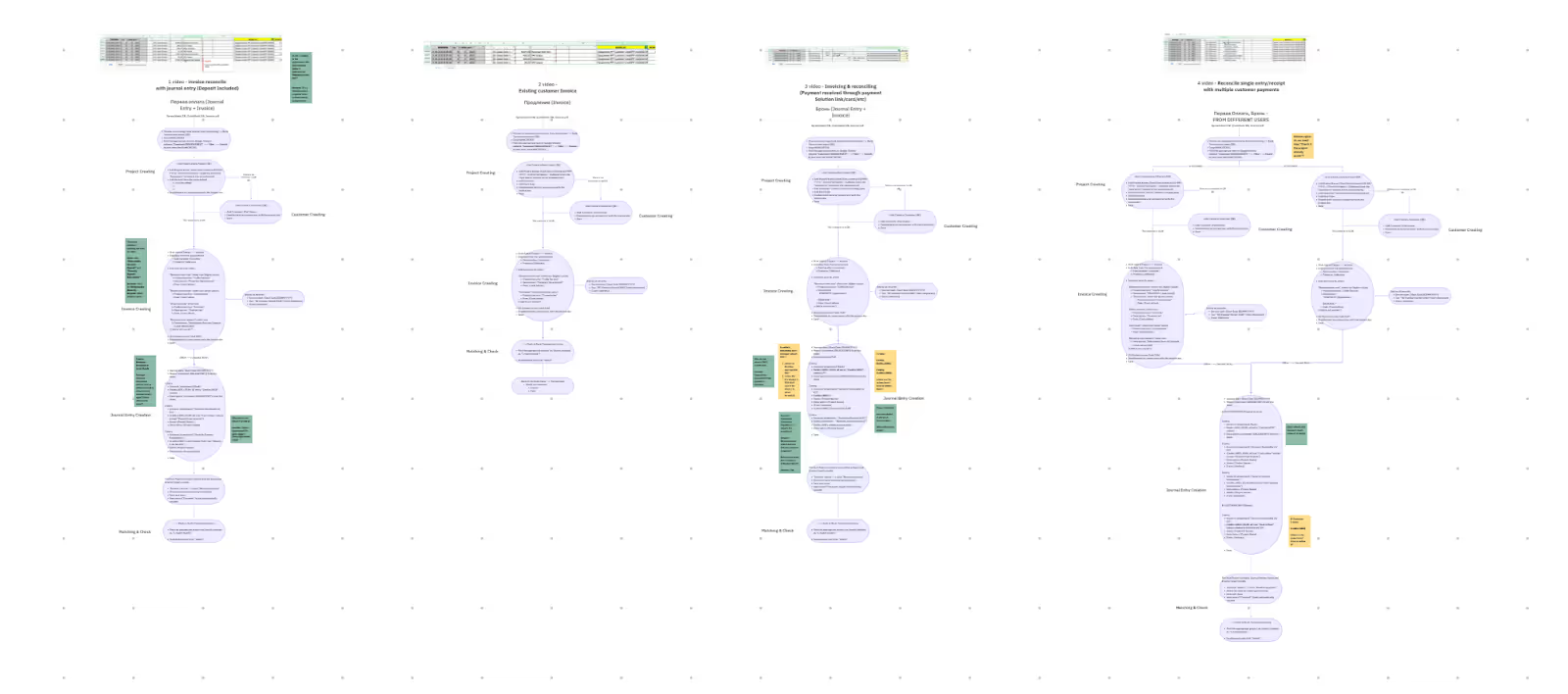Don’t Automate the Mess: Why Businesses Need Operational Discovery Before Implementation
.avif)
Across industries, from small production to retail and logistics, everyone is chasing automation. AI tools are being deployed in production lines, sales operations, warehouses, and customer service, and yet, many leaders quietly admit: “We expected efficiency, but our workload barely changed.”
That’s because AI doesn’t fix broken processes — it scales them.
AI Is Everywhere But Often in the Wrong Places
As McKinsey’s recent analysis on agentic AI notes, the real impact doesn’t come from simply adding new tools. It comes from redesigning workflows around how humans and AI collaborate. Companies that treat AI as a plug-in to existing systems often accelerate inefficiency instead of removing it.
Before bringing in automation, a company must first ensure three things:
- The process is truly critical for business growth,
- It’s clearly defined and structured, and
- Only then it can be handed over to automation.
McKinsey cautions:
“Without careful workflow design, agentic AI can just accelerate inefficiency.”
At Atomic Actions, we’ve seen this pattern again and again. Businesses rush to “digitize” their operations without understanding what actually slows them down. The result? Layers of complexity, fragmented systems, duplicated data, and automated chaos.
Automation Without Discovery = Scaling Inefficiency
Let’s take an example.
A mid-sized electronics distributor came to us struggling with invoicing. Their billing team was drowning in PDFs and emails, manually creating invoices in QuickBooks. They wanted “AI invoicing.”
But before building, we ran operational discovery, a structured process audit. It turned out, their real bottleneck wasn’t QuickBooks or the team. It was the way data arrived. Each vendor had a different format, and no one was tracking missing product entries.
So we didn’t start with AI. We started with workflow design. We mapped the incoming data, defined ownership, and only then built automation using Make, Parsio, and ChatGPT.
The result is automated invoicing:
- 15x faster invoice creation
- 100% elimination of manual data entry
- 3x more invoices processed with the same team
That’s not “AI replacing people.” That’s AI amplifying a clean, well-defined process.
Read more: X-Cel Technologies, Invoice Automation Case Study
The Hidden Trap of “All-in-One” Systems
When operations get messy, executives often think:
“We need one big platform to control everything: one CRM, one ERP, one source of truth.”
It’s an understandable impulse. But “all-in-one” rarely means “all that you need.”
Every company already runs on a mix of specialized tools: CRMs, marketing tools, accounting systems, knowledge bases, website admin panels, analytics tools, manufacturing software, warehouse trackers, eCommerce platforms. Add Google Sheets, email clients, cloud storage. The real challenge isn’t having too many tools. It’s that they are not connected.
Replacing them with one monolithic SaaS ERP often creates more friction: learning curves, migration issues, and loss of flexibility.
The smarter approach? Operational integration.
Instead of replacing your stack, connect it.
- Keep your CRM that works, just integrate it with your invoicing system.
- Keep your warehouse software, just sync it with your ERP and e-commerce platform in real time.
- Keep your sales & marketing tools, but automate lead flow and reporting between them.
This mindset powered our BlackWood GmbH project — a multinational coaching company that struggled with disconnected client management across HubSpot, Stripe, and EasyBill. We built a modular CRM and payment system that unified sales, invoicing, and tax logic, not by replacing tools, but by linking them smartly.
The outcome of custom CRM for education:
- +15% sales conversion
- 40% operational cost decrease
- +20% customer satisfaction
Read more: BlackWood GmbH, CRM and Payment Automation Case Study
Operational Discovery: The Step Most Companies Skips
Before you automate, ask yourself these five questions. They’re the CustDev of your internal operations:
- Is this process truly business-critical?
Will automating it drive revenue, reduce costs, or improve customer satisfaction?
(If not, it’s probably not worth automating.) - Do we know the exact steps?
Many teams “feel” they understand a process until they try to map it. Write down every handoff and every decision point. - Who owns each step?
Lack of responsibility creates hidden delays and errors. Automation won’t fix unclear ownership. - Where is the data coming from and where does it go?
Every integration depends on clean, structured data. Bad input kills good automation. - What happens when something fails?
Every automation needs human checkpoints and alerts. Without fallback logic, your system breaks silently.
At Atomic Actions, we treat operational discovery as non-negotiable. It’s the equivalent of customer discovery in product development. You can’t build a scalable system without understanding what you’re scaling.
AI Should Follow Process, Not Lead It
The idea of “AI-first transformation” sounds appealing, but in practice, AI should come last, not first.
Here’s the sequence we follow with clients:
- Discover: Audit an operational process and identify inefficiencies.
- Design: Create a unified process map. Who does what, when, and why.
- Define: Set measurable outcomes (time saved, error rate, margin gain).
- Automate: Build smart, low-code automations and AI agents around those goals.
- Refine: Monitor, collect feedback, and evolve the system as operations grow.
Invoicing & Payment Process Discovery That Paid Off
We recently started automating a real estate business that wanted to improve its invoicing and payments. The process looked simple on paper, but in reality, it involved deposits, temporary bookings, bank transfers, extensions, and several payment tranches that had to stay in sync with accounting.
Instead of building straight away, we mapped the entire flow step by step. That alone exposed where hours were being lost: duplicated entries, manual checks, and missing status updates between systems. Once we had the full picture, it became clear which tasks could be automated, where AI could step in for validation, and where a custom integration would tie everything together.
That’s what real discovery does: it turns a messy process into a structure that you can confidently automate without breaking anything along the way.

How Atomic Actions Helps Businesses Automate the Right Way
At Atomic Actions, we don’t just build automations or CRMs, we start with audits and operational mapping. We help you understand where your processes actually get stuck and where automation can bring the fastest, most visible return.
Here’s what we do:
- Run operational audits to find hidden inefficiencies
- Map end-to-end workflows and decision paths
- Point out critical weak points to be addressed first
- Build automation (AI, integrations, custom modules) around the cleaned processes
- Monitor and iterate to maintain ROI and adaptability
And most importantly, we don’t make you rebuild everything from scratch. Unlike off-the-shelf SaaS tools, we work with how your business already operates, improving and connecting what’s there instead of forcing you to start over.
If you’re considering ERP, CRM, factory, warehouse, or retail automation, and want to ensure you don’t “automate the mess”, we’d be glad to help.






%20(1).avif)
.avif)





